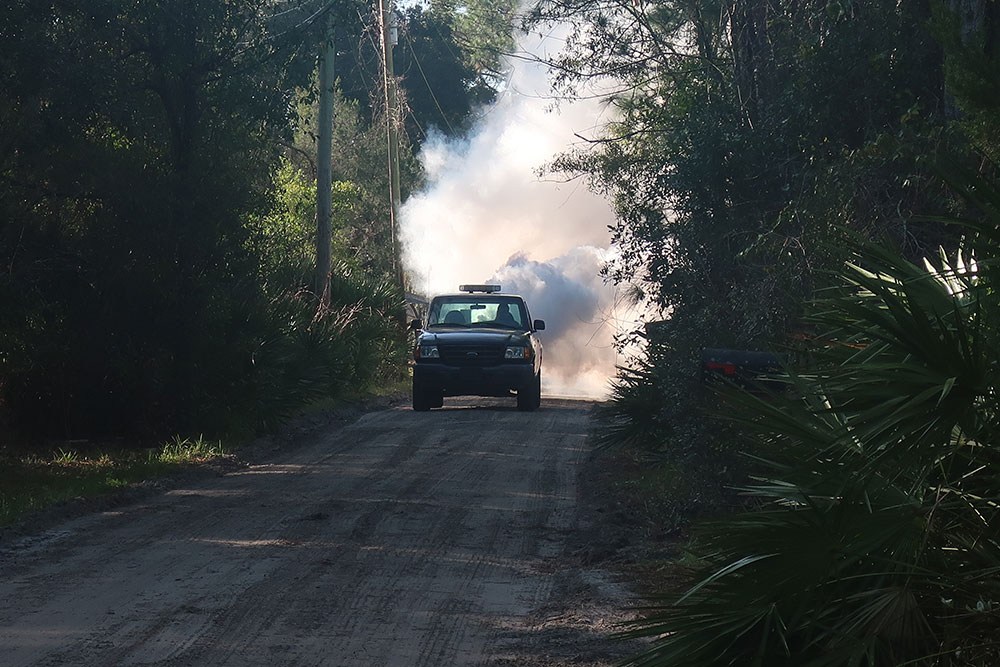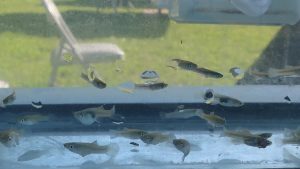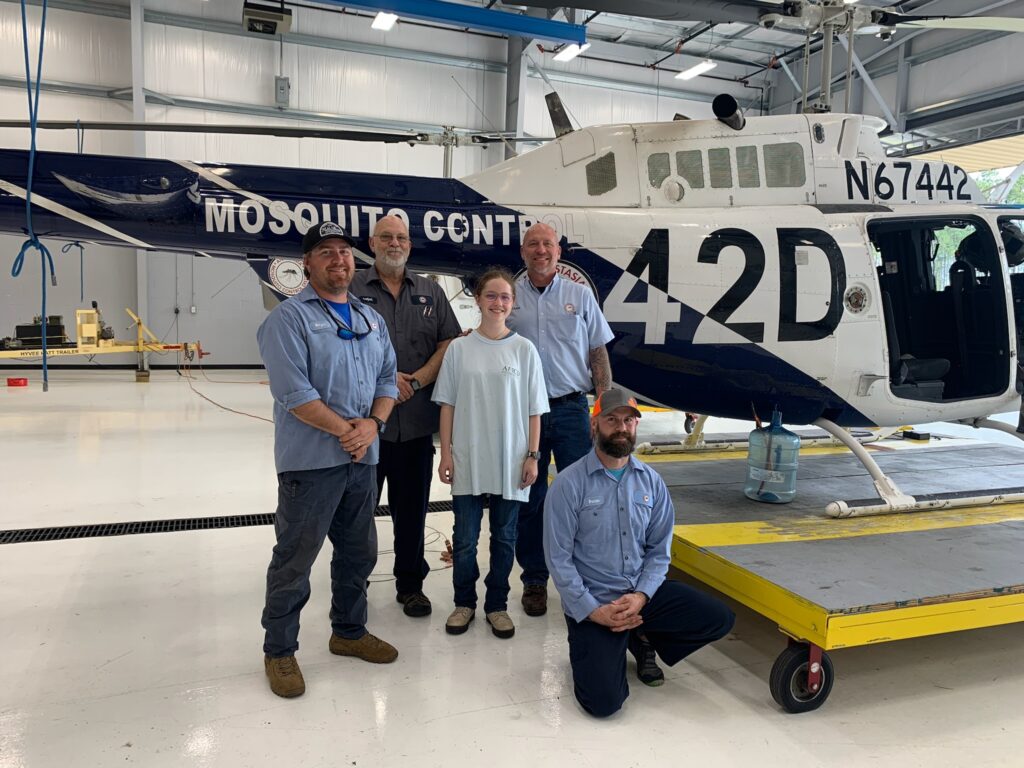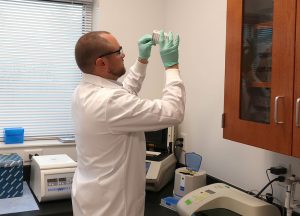AMCD’s operations for controlling mosquito populations is divided into three major sections: Surveillance, Ground Operations, and Aerial Operations.
Each section of our Operation Program works together like linked gears in a machine to control mosquito populations around residential areas.
“Usually, the most environmentally and economically friendly form of mosquito control is source reduction. This is simply the processes of eliminating mosquito breeding sites by dumping, draining, and covering standing water around your home.”
AMCD splits St. Johns County into 13 zones. Each zone is assigned to one of our licensed MCT. Our MCTs drive throughout their zone every workday to look for areas with large mosquito populations, or areas that can potentially see mosquito hatch offs. MCTs also conduct property inspections when a service request is submitted in their zone. Depending on what our MCTs find in the field, they will either use adult mosquito control methods or larval mosquito control methods to reduce mosquito populations.
Adult Mosquito Control

Adult mosquito control methods are used to kill adult mosquitoes. To control adult mosquitoes, AMCD mainly uses synthetic pesticides known as adulticides. AMCD applies the adulticides using ultra low volume (ULV) and thermal fogging equipment. We use synthetic pyrethroids for adult mosquito control by ground ULV application. The ULV applicator is mounted on a truck, or a backpack sprayer. Thermal fogging can be applied to an area with a truck or with a hand held thermal fogger. We also use synthetic pyrethroids in our thermal foggers. To use any form of adulticide, we need justification. This means that there must be adult mosquitoes present in the area for us to treat.
Larval Mosquito Control
Larval Mosquito Control methods are used to kill the immature, aquatic stage of the mosquito. We like to focus on using these methods because the larval stage is concentrated to a specific area (water body) and we can use biological control methods that are environmentally friendly. It is also important to kill mosquito larvae before they become adult mosquitoes because larvae never have a chance to bite which eliminates the possibility for disease transmission and reproduction.
The Larval Mosquito Control methods we use are:
Source reduction: Dumping, draining, and covering sources of stagnant water to reduce mosquito breeding. This is the most effective but time intensive type of mosquito control.
BTI (Bacillus thuringiensis israelensis): BTI is a biological control that uses a bacterium that occurs naturally in soil sediments beneath ponds and lakes. When BTI is ingested by the larvae, it disrupts their digestive system. BTI only affects mosquito and other types of fly larvae (midges and blackflies) so this type of application has no non-target impacts.
Coco bear: A mineral oil-based pesticide that spreads across the water impacting both the pupal and larval stages of mosquitoes by impeding their ability to receive oxygen from the water surface.

Mosquito fish (Gambusia affinis): A fish that eats mosquito larvae and other small arthropods. Gambusia affinis is native to Florida and can be found naturally in freshwater habitats. AMCD rears these fish and places them in water sources where mosquito larvae might flourish.
Insect Growth Regulators (IGR): Methoprene and pyriproxyfen. IGRs prevent mosquito larvae from turning into viable adult mosquitoes. We apply IGRs in the form of granules and water-soluble packets. IGRs, when applied according to the label, do not impact other aquatic life.
Aerial control is the use of an aircraft to apply pesticides to an area for mosquito control. AMCD uses helicopters for applying both adult and immature mosquito control. Aerial control is the preferred method when large areas of the county need to be treated, or land that is hard to access by truck. The benefit of having an aerial program is that AMCD can reduce the time it takes to treat our county after large rain events and during public health emergencies.

AMCD has an extensive surveillance program throughout St. Johns County. The purpose of our surveillance program is to monitor mosquito populations, mosquito-borne diseases, and environmental factors that influence mosquito populations.
Arbovirus Surveillance
Sentinel Chicken Surveillance Program
The purpose of the Sentinel Chicken Surveillance Program is to monitor the level of transmission of mosquito-borne diseases to the sentinel animals. We set up multiple flocks of chickens throughout St. Johns County from early Spring to the end of Fall. We take a small amount of blood from each chicken weekly and test the serum in-house for antibodies against West Nile virus. We also send a subset of each birds’ serum to the Florida Department of Health Laboratory in Tampa for confirmation of our in-house testing, and to test it for additional mosquito-borne diseases. Chickens are a dead-end host for mosquito-borne diseases so mosquitoes cannot pick up any virus from these birds and transmit to humans.
Mosquito Surveillance Testing Program
The Mosquito Testing Program tests the local mosquitoes for mosquito-borne viruses. We set up gravid traps to collect mosquitoes that are laying eggs thus indicating that they have already taking a bloodmeal. These mosquitoes are identified to species and tested in-house to see if the mosquitoes are carrying any mosquito-borne viruses such as West Nile virus, Saint Louis encephalitis virus, and eastern equine encephalitis.

Population Surveillance
Larval Surveillance
Mosquito Control Technicians (MCT) check stagnant bodies of water for mosquito larvae every day. They check the water by site or by using a dipper to scoop up the water for a closer look.

Adult Surveillance
Light traps: 41 CDC Light Traps baited with octanol (mimics ox breath to attract mosquitoes) are set up throughout St. Johns County every Monday. After 24 hours of being out in the field, we then pick up the traps and record the number and species of mosquitoes caught in each trap. This data is used to justify treatment by our Aerial or Field Operations.

Environmental Surveillance
The growth rate and activity of mosquitoes is heavily controlled by temperature and daylight hours. Growth rates and activity are accelerated when the temperatures and humidity are high. Mosquito populations also peak when daylight hours exceed nighttime hours. AMCD monitors all of these factors in determining larviciding and adulticiding operations.
Rain Gauge Surveillance
AMCD has rain gauges set up throughout the county to measure the amount of rainfall different areas may receive. Rain plays a huge role in when and where mosquito populations will emerge and become a problem, so we use this data to identify areas with higher rain fall to monitor the mosquito populations in those areas.
Temperature and Wind Surveillance
When our MCT record the rain gauge data they also record the temperature and wind direction at the site. The temperature and wind direction data coupled with the rain gauge data can give us a good indication on why a trap in the same location caught the number of mosquitoes it did.
